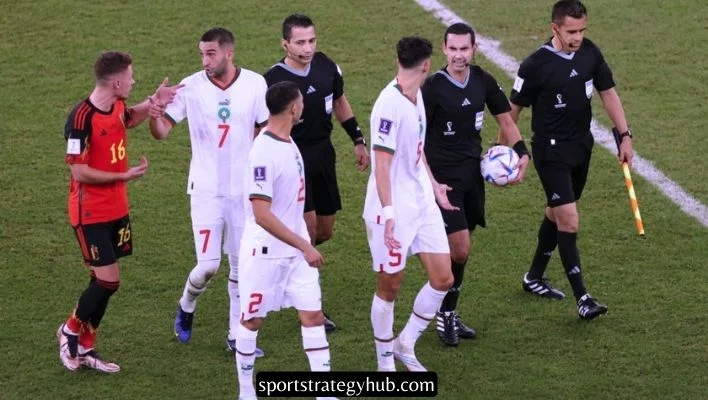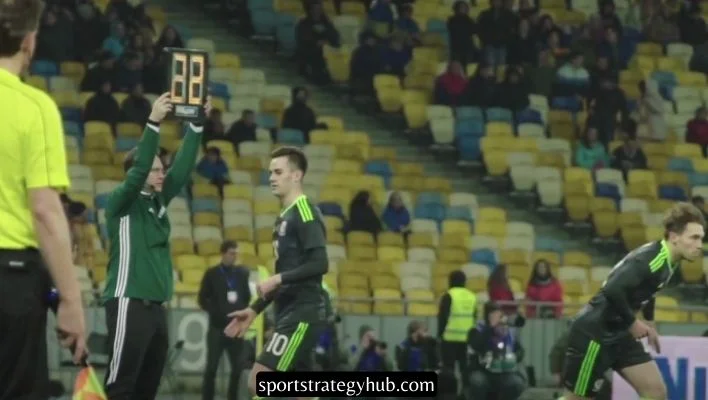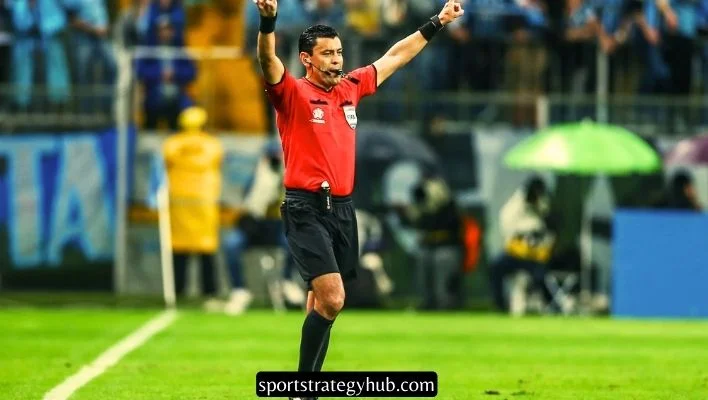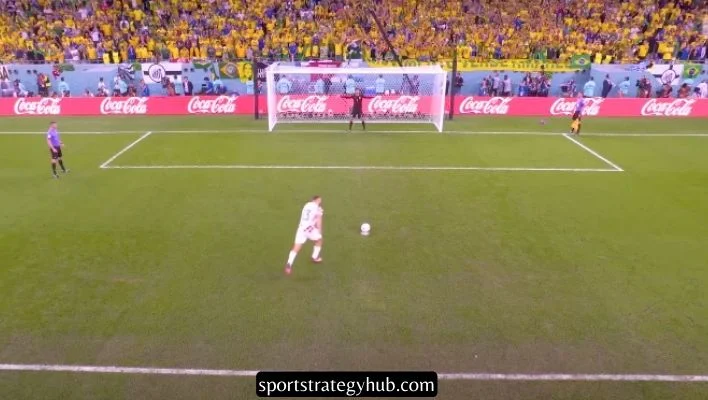How Long Is a Soccer Game: Halftime | Stoppage Time & Extra
Are you curious about the duration of a soccer game? Whether you’re a fan, a player, or just interested in the sport, knowing how long a soccer game lasts can provide valuable context and help you plan your schedule accordingly. In this comprehensive guide, we’ll break down the lengths of soccer games at various levels and competitions, including professional matches, youth leagues, and women’s soccer. So let’s dive in and explore the world of soccer game durations!
To provide a quick overview, here’s a chart outlining the lengths of soccer games at different levels:
Soccer Game Length Chart
| Level/Competition | Game Duration | Half-Time Break |
| Professional Matches | 90 minutes | 15 minutes |
| FIFA World Cup | 90 minutes | 15 minutes |
| Youth Leagues (Under 6) | Varies (e.g., 4×6) | No half-time |
| Youth Leagues (Under 8) | Varies (e.g., 2×20) | No half-time |
| Youth Leagues (Under 10) | 2×25 minutes | No half-time |
| Youth Leagues (Under 12) | 2×30 minutes | Varies |
| Youth Leagues (Under 14) | 2×35 minutes | Varies |
| Youth Leagues (Under 16) | 2×40 minutes | Varies |
| Women’s Soccer | 90 minutes | 15 minutes |
Keep in mind that the timelines provided are broad estimates and could differ slightly based on the particular league or competition guidelines. Let’s delve into each category for a more thorough understanding.
How Long Is a Professional Soccer Game?
In professional soccer, the standard match length is 90 minutes, split into two halves of 45 minutes each. This timing is consistent across many professional leagues globally, such as the English Premier League, La Liga, Bundesliga, and Serie A, among others. Additionally, there is a half-time break of approximately 15 minutes, allowing players to rest, receive instructions from coaches, and make any necessary tactical adjustments.
Please remember, that the 90-minute duration specifies the normal playing time and excludes any extra time added for stoppages or injuries that occur during the game. We’ll dive deeper into the concept of stoppage time in the following sections.
World Cup Soccer Game Length
The FIFA World Cup, the premier international soccer tournament, adheres to the same match duration as professional games. Each match in the World Cup is 90 minutes long, split into two 45-minute halves. Similarly, there is a half-time break of approximately 15 minutes.
Nevertheless, during knockout or elimination rounds such as the Round of 16, quarterfinals, semifinals, and the final, officials may allocate additional time. This occurs if the match concludes in a draw at the end of regular time. Extra time consists of two halves of 15 minutes each, making the total possible duration of a World Cup match 120 minutes. Should the match still be level following extra time, a penalty shootout takes place to decide the victor.
See Also: How Long Is a Football Game?
How Long Is a Youth Soccer Game?
The length of youth soccer matches varies with the players’ age groups. Organizers design these variations to suit the physical and developmental capabilities of young athletes. Let’s break down the lengths of games for various age groups:
For Under Age of 6
For children under the age of six participating in youth leagues, the recommended game format includes four quarters of six minutes each. There is no overtime or extra play allowed at this age level.
For Under Age of 8
Children under the age of eight typically play soccer games consisting of two halves of 10 minutes each. The half-time period can range from five to ten minutes, allowing for a brief break between halves. However, there are no specific recommendations regarding overtime durations.
For Under Age of 10
For players under the age of ten, the standard game format is two halves of 25 minutes each. Similar to the previous age group, there is no provision for overtime play.
For Under Age of 12
Both US Youth Soccer and AYSO suggest two 30-minute halves for players under the age of twelve. If necessary, overtime can be implemented, consisting of two halves, each lasting 10 minutes. However, AYSO rules do not specify any recommendations for overtime or extra play.
For Under Age of 14
Players under the age of fourteen typically play soccer games consisting of two halves of 35 minutes each. In addition, the rules allow for overtime periods of two 10-minute halves.
For Under Age of 16
For players under the age of sixteen, the recommended game length is two halves of 40 minutes each. This age group follows the same guidelines as professional matches in terms of game duration and overtime periods.
For Under Age of 19
As players approach the age of nineteen, the game length remains consistent with the standard professional format of two halves of 45 minutes each. At this stage, the players are considered to have reached the level of adult competition.
How Many Quarters in Soccer?
Unlike some other sports, soccer does not have quarters. The match is split into two segments, each with its designated duration, and includes a break at halftime. This division allows teams to switch ends of the field and provides an opportunity for players to rest and receive instructions from coaches.
The absence of quarters makes soccer a continuous and fluid game, with no predetermined breaks apart from the half-time interval. This format contributes to the dynamic nature of soccer, keeping players engaged and requiring endurance throughout the match.
How Long Is Halftime in Soccer?
Halftime in a soccer match typically lasts for approximately 15 minutes. This break allows players to rest, rehydrate, receive tactical instructions from coaches, and regroup for the second half of the game. During halftime, teams may also make substitutions or adjustments to their strategies based on the performance and dynamics of the match.

Most professional leagues and international competitions standardize the length of the halftime break to ensure fairness and consistency in game preparations and team management.
What Is Stoppage Time?

Stoppage time, often called injury time or added time, is the extra time added to the end of each half in a soccer match. This additional time makes up for moments lost to injuries, substitutions, deliberate slowdowns, and various breaks in play. The referee decides the exact amount of stoppage time by assessing the total time lost to these delays, then adds it to the half’s standard length.
The purpose of stoppage time is to ensure that the full 45 minutes of gameplay (excluding halftime) are completed, even if the clock displayed on the scoreboard reaches 45 minutes. It allows for a fair and accurate representation of the actual time spent playing during each half.
How Long Is Stoppage Time?
The length of stoppage time can vary from match to match and depends on the referee’s assessment of the time lost during the game. It is typically indicated by the fourth official holding up an electronic board displaying the number of additional minutes.
The length of stoppage time can vary from just a few seconds to multiple minutes, based on the specific events of the game. Factors such as injuries, substitutions, time wasted by players, and other interruptions contribute to the determination of stoppage time. The referee is given the authority to prolong the match beyond the initial 45 minutes if required. It’s crucial to understand that the amount of stoppage time is not fixed in advance and may differ from one game to another, even within the same tournament. This unpredictability adds an element of excitement and suspense to the game, as teams have the opportunity to score or concede goals during these additional minutes.
What Is Extra Time?

In some tournaments, like the knockout rounds or cup contests, if a soccer match concludes in a tie following the standard 90 minutes (plus any added stoppage time), extra time might be utilized to identify a winner.
Extra time consists of two halves, typically lasting 15 minutes each, played immediately after the completion of the regular 90 minutes. The additional time provides an opportunity for teams to break the tie and decide the outcome of the match. If the score remains level after extra time, the game may proceed to a penalty shootout to determine the winner.
Extra time is not a standard feature of all soccer matches but is commonly used in crucial stages of tournaments, such as the knockout rounds of the FIFA World Cup or domestic cup competitions.
How Do Penalty Shootouts Work in Soccer?

When a soccer match remains tied after the completion of regular time and extra time, a penalty shootout is conducted to determine the winner. Penalty shootouts are used in various knockout competitions, including the FIFA World Cup, UEFA Champions League, and domestic cup matches.
The procedure for penalty shootouts is as follows:
- Coin Toss: A coin toss determines which team takes the first penalty kick.
- Five Penalty Kicks: Each team takes five penalty kicks alternately, with different players from each team taking the shots. The objective is to score more goals than the opposition.
- Sudden Death: If the scores are still level after the first five penalty kicks, the shootout continues in a sudden death format. Each team takes one penalty kick, and the team with the higher score wins the shootout.
- Additional Shots: If necessary, the shootout can continue with additional penalty kicks, following the same sudden death format, until one team emerges as the winner.
Penalty shootouts add drama and excitement to soccer matches, often providing thrilling moments and intense pressure for the players and spectators alike.
FAQ
Professional women’s soccer games have the same duration as professional men’s games, lasting for 90 minutes of gameplay, divided into two halves of 45 minutes each.
A World Cup soccer game follows the standard duration of 90 minutes, divided into two halves of 45 minutes each. However, additional time may be added at the end of each half due to stoppages.
The halftime break in a FIFA game typically lasts for around 15 minutes. This break allows players to rest, receive instructions, and make any necessary adjustments before the second half begins.
A FIFA game, including both halves and the halftime break, typically lasts for approximately 105 minutes, considering the added time and halftime duration.
Conclusion
In summary, the length of a soccer game can vary depending on the level of play and the specific competition. Professional matches typically last 90 minutes, divided into two halves of 45 minutes each, with additional time added by the referee. Youth soccer games have varying durations based on the age group, ranging from shorter games for younger children to longer matches for older players. In international tournaments like the FIFA World Cup, the game length follows the standard professional format. Stoppage time and extra time are used to account for interruptions and break ties, respectively. Penalty shootouts are employed when a winner needs to be determined after extra time. Understanding the length and structure of soccer games adds to the enjoyment and appreciation of the sport.
Other Posts:
How long are baseball games
How many games in baseball
